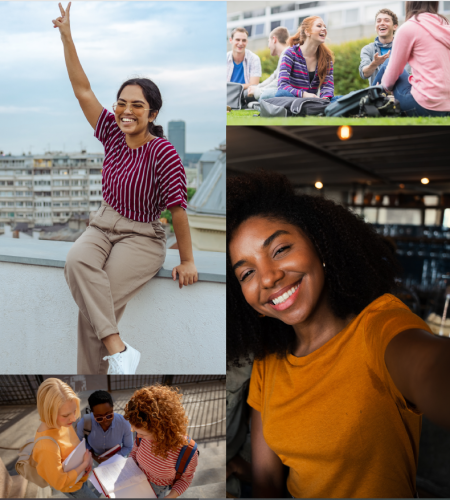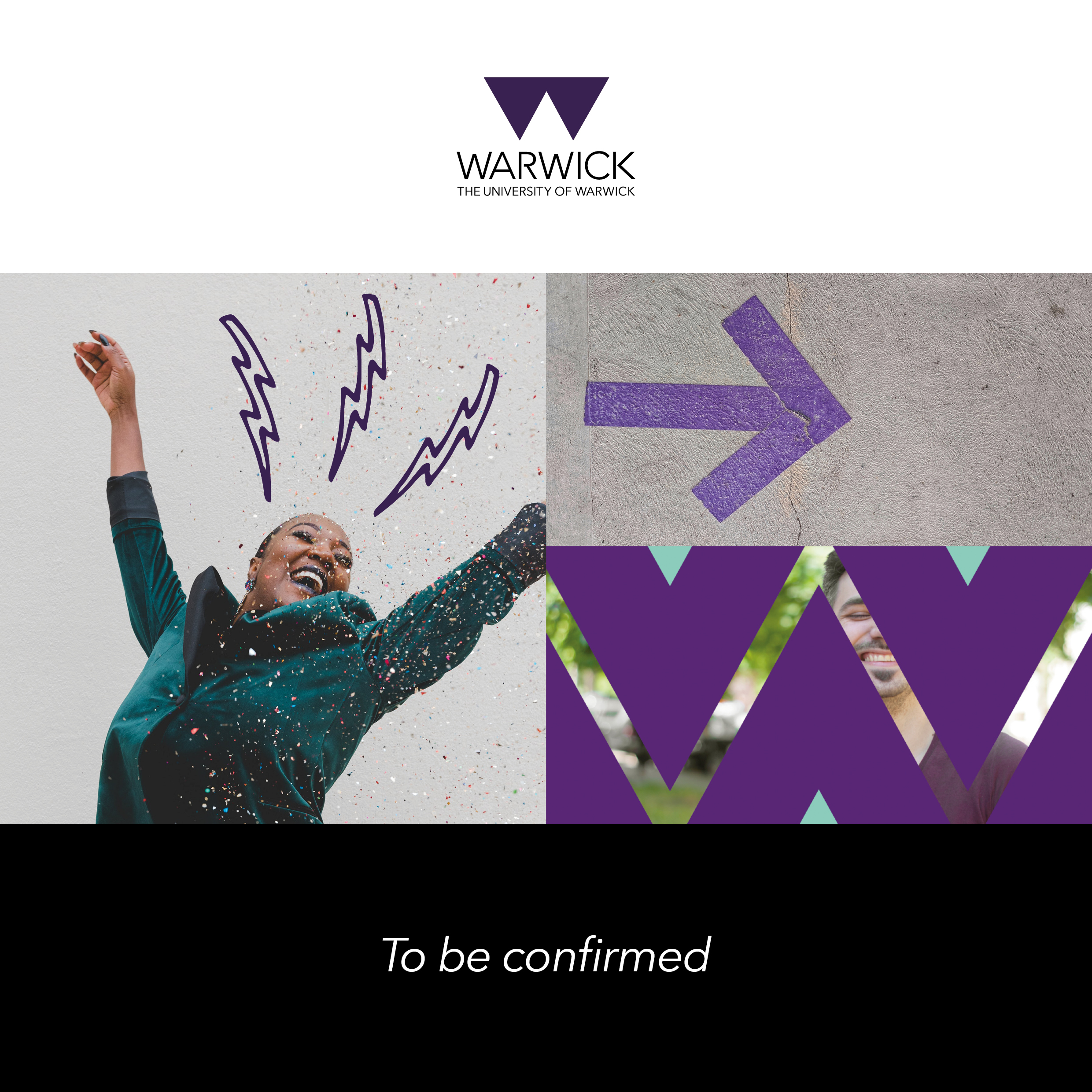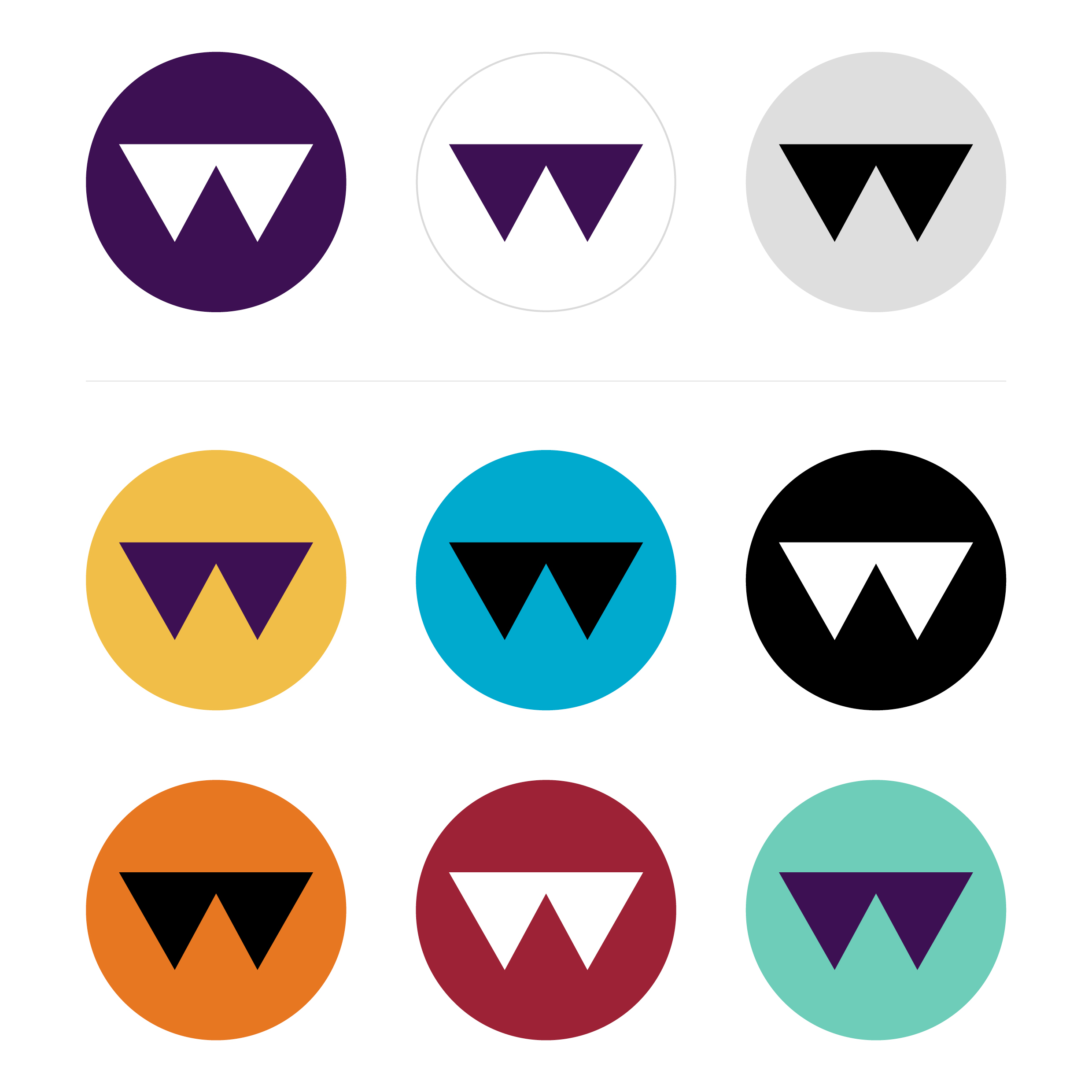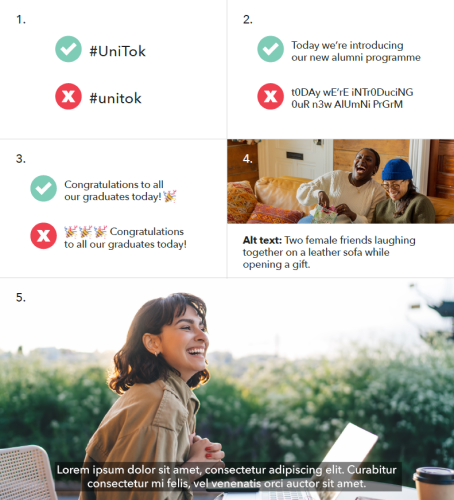Social media

The University of Warwick social media guidelines
Appropriate use of our institutional social media channels can help to elevate The University of Warwick’s online reputation, reinforce our strategy and further highlight our excellence, quality and prestige.
On this page, you'll find a high-level overview on how best to apply our key brand elements when using social media.
For more comprehensive guidance on how to approach social media, such as channel-specific strategy or community management, please refer to our Social Media Playbook.
If you have any questions about our approach to social media, are considering a new account request, or would like to share content on our corporate social channels, please email socialmedia@warwick.ac.ukLink opens in a new window.
Mood & tone
Our social media content is an extension of our strategy. Different channels, topics and campaigns will have their own specific requirements, but it’s important to maintain a consistent mood & tone across everything we share.
We advise that posts should visually and verbally reflect our people and the impact of our work in a warm and authentic way. Highlighting real people, sharing real moments and inviting interaction will help to engage audiences and maintain a feeling of authenticity.
For further guidance on how to capture our mood and tone effectively, please see our Imagery guidelines.

Brand cues
Each social channel will have its own restrictions and rules around how to structure and deliver content, so the use of our brand cues will be different depending on what and where you are posting.
Where possible, it would be good to include these subtle brand cues:
- Our master logo or ident (may be used where deemed appropriate by the Social Media expert)
- Our aubergine colour (as scenery, a prop or a graphic element)
- Our graphic device as a design element or video transition
- Our tagline: 'To be confirmed' (as text on screen, spoken in video content or within post copy)
For further information, please see our Brand codes.
Profile pictures
We use our monogram, which is the ‘W’ shape from our master logo, as our social media profile picture for consistency across our channels to reinforce a unified voice and identity.
Please note that the top tier (top three) options should only be used for the main University social media accounts.
We ask departments to use the monogram in either aubergine, black or white on a coloured circle from our secondary or tertiary brand colour palette.
The social media profile pictures are available on our brand resources page.
Accessibility
Accessible social media content is paramount in our commitment to making our digital communications truly inclusive for everyone.
Taking accessibility seriously shows compassion for others and acknowledges that disability affects everyone.
By making your content more accessible, you can also avoid excluding a sizable portion of your audience and missing out on important conversations and connections.
We have outlined some key examples of best practices to consider below.
If you’d like a more comprehensive exploration into social media accessibility, we would recommend visiting www.accessible-social.comLink opens in a new window
Accessibility tips
We advise that the tips provided below are followed to ensure your posts are accessible across all platforms.
- Put compound hashtags in #camelCase or #PascalCase.
- Keep the formatting simple. Avoid multiple spaces, tabs, hard returns, varied letter case & numbers in place of letters.
- Avoid coded description interfering with the rest of your copy by using emoji in moderation and putting them at the end of posts.
- Describe any images, graphics or photography in alt text.
- Consider where your video will be displayed or published when making a decision about what type of captions to provide. For videos posted on social media, we recommend providing closed captions, or if that is not possible, use open captions.
Please enlarge the image on the left to see examples.



